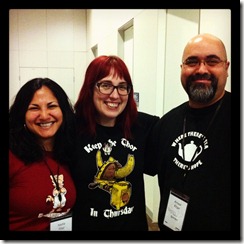One of the reasons I bought a tablet PC was so I could be truly mobile in my computing. An important part of mobile computing is to have Internet access wherever you go. And the obvious and most reliable way to get that access is to have your own mobile broadband connection.
Last year I got that connection from 3. I bought from them a USB mobile broadband modem and signed up for a prepaid month-to-month data plan.

[Source: PC World]
This year I went one better. I bought and got Lenovo to preinstall an internal broadband modem (the Qualcomm Gobi 2000) when I bought my tablet PC.
I did that because I didn’t want to carry around a USB modem that I’d have to plug in every time I was out and about and wanted to connect to the Internet.
My plan was to transfer my existing 3 connection over from the old modem to the new one. I considered going to a 3 store and asking them to do that for me but then realized that, being a technology geek, I could probably do all that (i.e. the SIM installation and network configuration) myself. And I was right :)
So, here’s how you do it…
First, Get a Connection
If you don’t already have a mobile broadband connection it’s pretty easy to get one from one of your local mobile carriers.
If you go with 3 in Australia, for example, you:
- go to one of their stores,
- sign up for an account (in my case, a prepaid one),
- tell them you’ll be using your own modem, and
- pick up the ‘3 Mobile Broadband Prepaid Starter Kit’ (which will include your SIM card).
Do read the BYO Modem page on their website before you go ahead and do that, though.
In my case all I had to do was take the SIM out of my USB modem.
Insert the SIM Card
Inserting the SIM card into your laptop (or tablet PC, as the case may be) is really easy.
In the Lenovo ThinkPad X210 tablet PC – as in other ThinkPad X-Series computers – the slot for the SIM card lies behind the battery bay (click images for larger photos):

Take the card, orient it according to the etching on the metal plate below the slot, and push it all the way in:

Then put the battery back on and you’re done.
Power-On the Modem
Assuming that you actually have a broadband modem installed in your computer and that all your drivers are up-to-date, you now need to turn your modem on.
To turn it on, use Lenovo’s Fn+F5 keystroke to bring up the ‘ThinkPad Wireless Radio’ window and press the ‘Power On’ button for the Wireless WAN Radio:

That should change the colour of the ‘Wireless WAN Radio’ text to green and should also light up (again, in green) the WWAN status indicator light just below the screen:

[Source: Laptop Mag]
If this doesn’t happen you probably don’t have a modem installed (check in Device Manager in Windows) or your modem isn’t configured properly (run Windows Update to get its latest drivers).
Configure the Connection
Next, you need to set up the connection to 3’s mobile network.
Since I use Lenovo’s Access Connections utility to manage my connections that was pretty straightforward to do. All I had to do was create a new Location Profile by clicking on the ‘Location Profiles’ tab:

And then pressing the ‘Create’ button:

Since I already have a Location Profile for my connection – called ‘3 Mobile Broadband WWAN’ – I’ll show you what its configuration is by clicking the ‘Edit’ button instead.
Under the ‘General Settings’ tab I’ve:
- named my profile,
- said that I want to connect using ‘Mobile Broadband’, and
- selected the Gobi 2000 modem (the only option in the list):

Under the ‘Mobile Broadband Settings’ tab I’ve said that this is an HSDPA/GPRS network that requires ‘Custom Settings’:

These ‘Custom Settings’ (which you get to by clicking the ‘Edit Settings’ button) are:
- the ‘Known WAN service providers’ option is ‘Other’,
- the ‘Custom service provider’ name is ‘3MobileBroadband Prepaid’ (this will be ‘3Mobile Broadband Postpaid’ if that’s the connection you signed up for),
- the APN is called ‘3services’:

There’s no need to change any advanced or additional settings. Click all the ‘OK’ buttons and you’re done.
Connect to the Network
Go back to the ‘Connect to the Internet’ tab and you should now have ‘3 Mobile Broadband WWAN’ listed in your Location drop-down list. Select that and click the ‘Connect’ button next to it.
In this screenshot I’ve already clicked ‘Connect’ so that button has changed to ‘Stop’:

It should take about 10-20 seconds to connect…and off you go!

If the connection doesn’t take place then something hasn’t been configured properly or your account with the mobile carrier hasn’t yet been activated. I can’t help you with the former (because I’ve already told you all I know) and the latter you should already have worked out with the salesperson at the mobile carrier’s store.
If further tweaking fails and you can’t find the answer on the Internet then you should take your laptop to the mobile carrier’s store and ask for help (or, alternatively, call them up and get help over the phone).
But if all this has worked then you should now be connected to the Internet via your mobile broadband connection. Yaay!






















